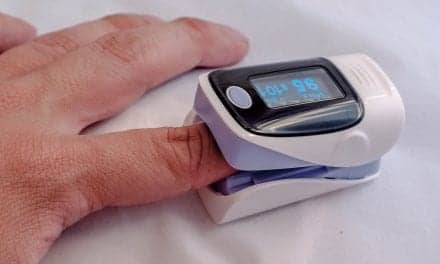One of the most inherent problems with pulse oximetry has been obtaining accurate readings from patients who fail to remain still or who have poor circulation. Until now.
The use of pulse oximetry has become widespread in a number of medical settings, from doctor’s offices and emergency departments to delivery rooms and skilled nursing facilities. Today’s devices also have become more sophisticated. Delivery systems and capabilities have been significantly enhanced, providing clinicians with more accurate health assessments leading to better and more appropriate care.
One of the most inherent problems with pulse oximetry has been obtaining accurate readings from patients who fail to remain still or who have poor circulation. Recently, Masimo developed SET Measure-through Motion and Low Perfusion Pulse Oximetry, which overcomes these challenges. The technology utilizes multiple algorithms running in parallel to extract the true arterial signal from the “noise” or from combined arterial and venous blood signals that occur during motion and low perfusion, according to Mike Drummond in Masimo’s Corporate Communications and Media Department.
In fact, Drummond pointed out that Masimo SET has proven to be so effective in detecting critical congenital heart defects (CCHD) that the American Academy of Pediatrics and the Department of Health and Human Services have recommended mandatory screening for all newborns using “motion-tolerant pulse oximeters that report functional oxygen saturation and have been validated in low perfusion conditions.” The Centers for Disease Control and Prevention reports that CCHD accounts for 25% of all congenital heart defects.
This joint decision came about after reviewing two independent studies1,2 that evaluated nearly 60,000 newborns exclusively with Masimo SET. More impressive are findings from the largest newborn study3 ever conducted using Masimo SET. This trial involved 122,738 newborns and demonstrated dramatically improved sensitivity for detecting CCHD from 77.4% to 93.2%. The study findings also indicated that the false-positive rate for detecting CCHD by clinical assessment alone was 2.7%, while pulse oximetry alone had a lower false-positive rate of 0.3%.
Drummond pointed out that not all pulse oximeters are created equal. “Because pulse oximetry is widely available in hospitals, many mistakenly assume that any pulse oximeter can be used for newborn screening. In fact, there are no large, appropriately powered newborn screening studies using non-Masimo pulse oximetry with similar effectiveness as the three large studies of over 180,000 newborns using Masimo SET,” he said. “Masimo SET is proven to reduce false positives, which helps to optimize nursing workflows and avoid unnecessary procedure costs, such as echocardiograms.”
While the traditional finger clip is one of the most commonly used devices, it does not always produce accurate results; some clinicians prefer to use forehead sensors in certain situations. Masimo recently developed a TFA-1 Transflectance Adhesive Forehead Sensor, which leverages its Masimo SET Measure-through Motion and Low Perfusion pulse oximeter. This single patient use device provides a viable alternative to the usual finger clip. “Additionally, the TFA-1 introduces a flat cable for improved patient comfort and a small size range to allow the use on both pediatric and adult patients,” Drummond noted. He explained that the forehead sensor could prove to be a better option due to its rapid response to saturation changes during low perfusion. Additionally, the single patient use feature helps to ensure compliance with infection control procedures.
Drummond added, “The TFA-1 is less complex to manage than reusable sensors, which require cleaning, storage, and inter-departmental transport. The forehead sensor also allows for easy access during surgery, resuscitation, and when application on fingers is not practical or possible.”
Not only does pulse oximetry help in the detection of CCHD in infants, but it also has been known to detect other conditions, such as pneumonia, early-onset sepsis, neonatal infection, and pulmonary hypertension. Regardless of delivery system, it’s important to obtain dependable results for optimal patient care. RT
___________________________________________________________________________
Phyllis Hanlon is a contributing writer for RT. For further information, contact [email protected].
___________________________________________________________________________
References
-
de-Wahl Granelli A, Wennergren M, Sandberg K, et al. Impact of pulse oximetry screening on the detection of duct dependent congenital heart disease: a Swedish prospective screening study in 39,821 newborns. BMJ. 2009 Jan8;338:a3037. doi: 10.1136/bmj.a3037.
-
Ewer AK, Furmston AT, Middleton LJ, et al. Pulse oximetry as a screening test for congenital heart defects in newborn infants: a test accuracy study with evaluation of acceptability and cost-effectiveness. Health Technol Assess. 2012;16(2):v-xiii, 1-184. doi: 10.3310/hta16020.
-
Qu-ming Zhao, Xiao-jin Ma, Xin-ling GE, et al. Pulse oximetry with clinical assessment to screen for congenital heart disease in neonates in China: a prospective study. Lancet. April 2014. doi:10.1016/S0140-6736(14)60198-7











